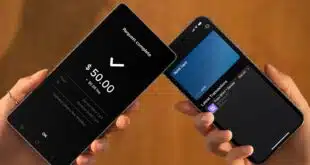There are still plenty of cash-heavy merchant markets that are looking to launch—and expand—digital payments.
As deeply embedded as digital payment are at the point of sale, there are still merchant segments that are heavy on cash and light on digital-payment technology. These markets—including vending machines, micro-markets, and laundromats—are beckoning to payments providers.
At the same time, many payments providers pursuing these venues are pushing into emerging markets that accept only digital payments, such as electric vehicle charging stations.
But the pathway for tapping into these markets is by no means unimpeded for payment providers.
For one thing, it can be tricky to make the economics work. In vending, for example, it can cost more to process a transaction than the cost of the product sold.
There are also infrastructure issues, as is the case with the electric-vehicle charging stations, where a lack of standards initially hindered interoperability between station operators’ apps. As a result, vehicle owners had to load multiple apps to power up away from home.
A ‘Red Ocean’
Such barriers to entry, however, have not deterred payment providers specializing in these niche markets from carving out their share of the pie.
Of the markets now targeted for the addition or expansion of digital-payments options, vending arguably has one of the highest penetration rates for digital-payment acceptance.
In 2022, 67% of all vending sales were cashless, according to Cantaloupe Inc., which specializes in payment technology for vending machines and self-service marketplaces. Of the cashless transactions at vending machines, 53.9% were made using contactless cards.
“Consumer preference and the convenience of being able to pay digitally are what’s driving the move away from cash in this market,”says Cantaloupe chief executive Ravi Venkatesan. “Vending operators, too, are realizing the advantages of digital payments as the cost of handling cash and shrinkage continues to be a problem.”
Indeed, the rise in cash-handling costs has mirrored the rise in the cost of labor over the past couple of years, growing 10% to 15% during that period, according to Venkatesan.
Another factor in the business case for digital payments at vending machines is a higher average ticket. In 2022, the average cashless purchase at a vending machine was $2.11, compared to $1.36 for cash purchases, a 55% increase in consumer spend, according to Cantaloupe.
“Digital payment acceptance also makes it easier for vending operators to raise prices, especially in inflationary times, because consumers won’t be limited by the amount of cash in their pocket,” Venkatesan says.
That means higher overall sales for vending machine operators. Nayax Ltd., a fintech that also provides cashless-payment solutions for vending machines and unattended retail, says its clients can see as much as a 50% increase in sales after installing cashless payment. More specifically, vending-machine operators see an average increase of 30% to 40% in overall sales.
Overall, there are between 3.5 million and 4.5 million vending machines in North America, according to Cantaloupe. Total sales this year at vending machines are projected to grow 10% to 12%, with the average ticket for cashless transactions increasing to $2.40, compared to $1.52 for cash transactions.
And there are growth opportunities. Nayax says less than 20% of unattended devices accept cashless payments. And the unattended-retail market is estimated to grow to $133.3 billion by 2025, up from $44.4 billion in 2020, while vending is projected to become a $56.3 billion market in 2025, according to Nayax. In addition, the number of unattended retail devices has the potential to reach 54 million in 2025, up from 44 million in 2020.
“Given current market trends, we see a huge potential for growth in cashless payments overall,” says a spokesperson for Nayax. “Processing digital payments for vending machines is a competitive market—a red ocean, if you will. We’re seeing more consumers adapt to new payment methods such as contactless and digitalized methods.”
Immediate Payment
Aside from vending, digital payments are taking root in amusement parks, arcades, golf-ball dispensers at driving ranges, and even in massage chairs at airports. “In amusement parks we found that when people pay for gaming digitally, they spend $5 on average, compared to 95 cents when using cash,” says Venkatesan.
While Cantaloupe sees tremendous growth in vending, unattended retail, and electric-vehicle charging, there are only a handful of competitors in these markets. The reason is that most payment providers can’t make the economics work given the small ticket sizes.
“We handle more than [a] billion transactions, most of which are in the $2 range,” says Venkatesan. “Not every company that wants to compete in this space can make the economics work. We have invested in building an infrastructure that can handle small and large tickets efficiently and fought with payment networks for a more efficient cost of acceptance for transactions.”
EV charging stations are a relatively new market, but the opportunity here has grown as the sales of electric vehicles increase and more automakers add electric vehicles to their lineup.
As more electric vehicle charging stations are built and made available at hotels, malls, and in parking lots—station operators have been forced to make their respective apps interoperable with one another to enable payment from more customers. As a result, consumers no longer have to download an app for each charging-station brand.
“This helps maximize utilization rates,” says Joseph Levy, chief technology officer for Driivz Ltd., a provider of white-label charging-management software. “Roaming is no longer a barrier.” As of the end of last year, there were almost 54,000 charging stations in the U.S., according to Alternative Fuels Data Center (chart, page tk).
On the payments side, Driivz’s software allows charging-station operators to offer a variety of payment options, including subscriptions, memberships, and pay-at-station. In addition, station operators can offer consumer incentives, such as an additional $10 credit when purchasing a subscription, to engender customer loyalty.
The software also supports dynamic pricing, such as changing prices during peak and non-peak hours for electricity usage. Driivz connects to multiple payment gateways to enable payment.
“We have helped move charging-station companies away from an end of month billing model to immediate payment,” Levy says. “Our software even enables charging companies to book reservations for a fee.”
For example, a consumer booking a reservation may be charged $5, with a $3 fee charged to the payment method used to book the time slot if the consumer fails to show for her appointment.
Payments aside, Driivz also provides operators with a couponing program. The idea grew out of the fact that EV charging can be a lengthy process. Rather than have customers mill around with nothing to do, the charging station can send a coupon to a customer’s app that can be used in an adjacent convenience store. If the charging station is located at a mall, coupons can be generated for stores within the mall.
“As the industry evolves and EV becomes more central, digital payments and apps, too, will be key as these payment flows are almost entirely digital—often, even reloadable or prepaid balances that the consumer can use,” says Scott Mackay, vice president of Carat Connected Commerce for Fiserv Inc. “And in the future, digital payments and apps will create a canvas to further introduce loyalty, embedded financial tools, and other solutions.”
Minimizing Apps
Parking, which has been steadily gravitating toward digital payments for more than a decade, is another market ripe with opportunity for the expansion of digital payments. One such opportunity lies in text-to-pay, which enables merchants to accept payments through mobile text messages.
A relatively new payment option, text-to-pay has been gaining momentum in recent years. One company applying it to parking is mobile-management platform provider Passport Labs Inc., which recently launched a text-to-pay solution for parking in Atlanta, Decatur, Ga., New Orleans, and Gretna, La.
The company, which is partnering with parking-facility management-services provider SP Plus Corp., will enable consumers to pay for parking by text using SP Plus’s Parking.com solution.
One factor driving the adoption of text-to-pay is that consumers want to minimize the number of apps they need to load on to their phone to enable payments.
“In the context of parking, this situation is an opportunity for a municipality to provide its constituents with various options, ultimately increasing compliance. Also, technology improvements, particularly in mobile Web experiences, have made it easier to use digital payment methods,” says Sarah Ratcliffe, senior vice president for Product Management at Passport.
“As people get more comfortable using these improved technologies,” she continues, “it has led to some pushback against mandatory app downloads and the favoring of other options like text-to-pay or QR codes.”
Fiserv has also jumped into the text-to-pay fray by partnering with conversational-commerce platform provider Authvia to enable independent software vendors to offer a text-to-pay solution through Fiserv’s CardPointe gateway.
The solution was developed in response to the growing use by businesses of tools to communicate with consumers via text and chat. It enables businesses to use text and chat to bill, invoice, and accept payments from consumers.
“Demand for text payments is driven by the growth of digital payments and the growth of texts [and] messaging as a channel for business-to-consumer communications,” says Mackay. “When a new communication channel emerges, new payments are likely to follow. These emerging payments can be beneficial for merchants as another way to modernize the payments experience, providing optionality and convenience to consumers.”
As the availability of digital payments in niche markets increases, so too do the opportunities for merchants to deepen their relationships with consumers. “Through these enhanced commerce experiences, brands are unifying what were previously viewed as transactional customer experiences with the goal of building deeper and more loyal relationships with their customers,” Mackay says.




